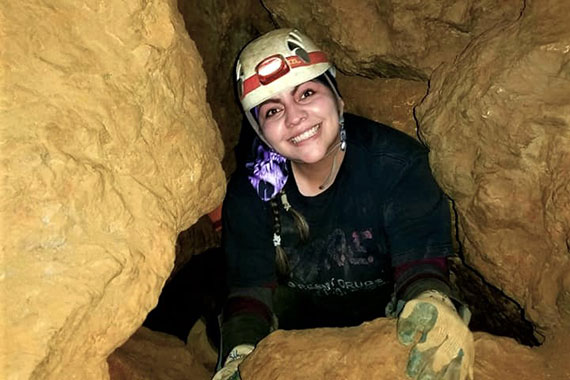Cave ecosystems are delicate environments that require special cave care for their preservation. Learn more about how you can do your part to help caves stay healthy.
Caves are unique elements of the landscape, home to species, geological formations and natural beauty not found aboveground. They are important for scientific research, recreation, and in many cases, human history. They are also fragile ecosystems easily damaged by careless intrusion from above.
Future Generations Are Counting on You
To preserve cave resources for future generations, the National Speleological Society calls on visitors to practice cave care—not taking anything out, including broken specimens; not bringing anything in, including trash and pollutants; and not disturbing living creatures soil formations by stepping away from established paths.
The National Park Service, which screens visitors to avoid the fungal white-nose syndrome that can devastate bat populations, provides these guidelines so you can “cave safely, cave softly.”
Cave Care 101
 Wear appropriate gear, including closed-toed shoes or boots.
Wear appropriate gear, including closed-toed shoes or boots.- Depending on where you go, protect your head with a bicycle, construction, or other helmet.
- Bring enough light, at least one flashlight per person.
- Choose caves suitable for everyone in your group. Don’t push beyond anyone’s limits. Children and seniors should be able to walk safely on their own.
- Explore as a group; choose easier caves and carry three flashlights.
- Have a check-in person who knows where you’re going and when you expect to return.
- Stay on available trails.
- Leave no trace of your visit, including trash.
- Schedule restroom visits before or after the tour or carry a portable toilet.
- Don’t touch the formations, art or artifacts.
- Don’t eat, drink or smoke in caves. Tobacco products can damage the environment. Food crumbs can upset the balance of living populations.
- Don’t use carbide or gas lanterns—only electric flashlights. Don’t shine them at cave creatures.
“Access to caves must be regulated because underground ecosystems are extremely fragile, an article published by Texas A&M explains. “One touch by a human hand transfers oils that damage the formation forever. In fact, humans significantly affect caves just by walking through them. Skin cells and lint from clothing easily shed onto cave formations and pile up over time; bacteria and mud are brought in on shoes; and carbon dioxide and ammonia gases are released through breathing.
“A cave’s unique microclimate can be changed by body heat, lights, the installation of concrete, steel walkways and supplemented ventilation. These changes can cause permanent and irreversible damage to the ecosystem, including the organisms living there.”
Government and commercial cave owners who open their caves to visitors are careful to ensure that the irreplaceable environments remain available for the enjoyment of generations to come. The next time you visit Glenwood Caverns or other cave attractions, be sure to do your part in proactive cave care. Future visitors will thank you for it.
Learn more about caves at Glenwood Caverns Adventure Park.




